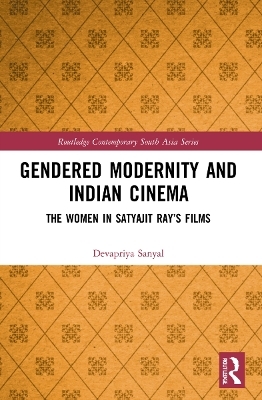
Gendered Modernity and Indian Cinema
Routledge (Verlag)
978-1-032-05172-7 (ISBN)
This book analyses the role of women in the films of one of the leading filmmakers of the ‘Third World’ in the 1950s, Satyajit Ray, a national icon in filmmaking in India.
The book explores the portrayal of women in the context of the creation of national culture after India became independent. Gender issues were very important to India under Jawaharlal Nehru in the 1950s – with the enactment of inheritance and divorce laws. Ray’s portrayal of women and his films anticipate much of the theorizing of later-day feminism. This book analyses cinematic texts with special reference to the women characters using feminist film theory and representation along with a study of the socio-political and economic conditions pertinent to the times – both relevant to the film’s making and its setting. The primary texts studied are films spanning over four decades from Pather Panchali (1955) to his last trilogy and are based on a categorization of the broad feminine ‘types’ represented in the films – based on the socio-political situations in which they are placed – and their relationships with the other characters present. Ray’s portrayal of women has an enormous bearing on our understanding of how modern India evolved in the Nehru era and after, and this book explore just that: the place of the woman as it is and should be in a young nation encumbered by patriarchy.
Gendered Modernity and Indian Cinema will be of interest to academics in the field of World cinema, Indian and Bengali cinema, Film Studies as well as Gender Studies and South Asian culture and society.
Devapriya Sanyal is Postdoctoral Fellow at Centre for Women’s Studies, Jawaharlal Nehru University, India, and the Indian Council of Social Science Research.
Introduction: Satyajit Ray: Nation, Modernity and Gender. 1. Searching for Antecedents: Feminine Portrayals in Literature and Cinema. 2. The Receding Mother Figure: Pather Panchali (Sarbojaya), Devi (Doyamoyee), Kanchenjhunga (Anima and Labanya), Aranyer Din Ratri (Joya). 3. Transgressors – Charulata (Charulata), Ghare Baire (Bimala), Pikoo (Seema). 4. Moral Beacons: Nayak (Aditi), Aranyer Din Ratri (Aparna), Seemabaddha (Tutul). 5. The New Woman: Mahanagar (Arati), Samapti (Mrinmoyee), Kanchenjunga (Monisha), Kapurush (Karuna). 6. The Amoral Woman – Pratidwandi (Sutapa), Jana Aranya (Kauna and the prostitutes). 7. Women on the Periphery: Apur Sansar (Aparna), Abhijan (Gulabi and Neeli), Ashani Sanket (Ananga), Shatranj ke Khiladi (the wives) and the Last Trilogy. Conclusion: Satyajit Ray and Art Cinema: The Issue of Agency.
| Erscheinungsdatum | 28.09.2023 |
|---|---|
| Reihe/Serie | Routledge Contemporary South Asia Series |
| Verlagsort | London |
| Sprache | englisch |
| Maße | 156 x 234 mm |
| Gewicht | 453 g |
| Themenwelt | Kunst / Musik / Theater ► Film / TV |
| Sozialwissenschaften ► Soziologie ► Gender Studies | |
| ISBN-10 | 1-032-05172-8 / 1032051728 |
| ISBN-13 | 978-1-032-05172-7 / 9781032051727 |
| Zustand | Neuware |
| Haben Sie eine Frage zum Produkt? |
aus dem Bereich


